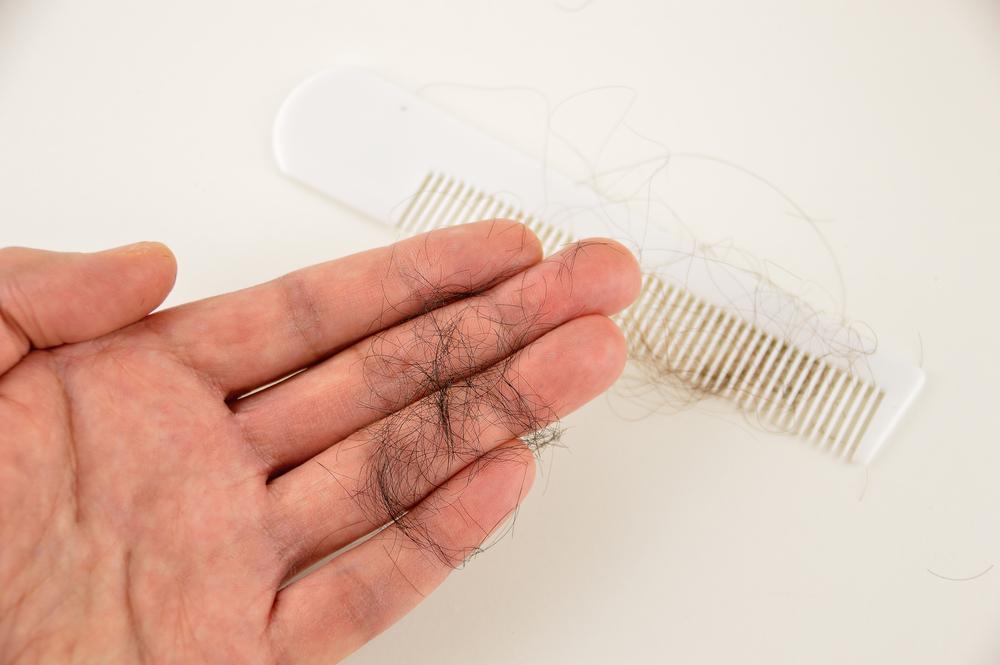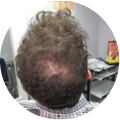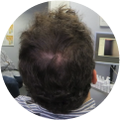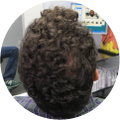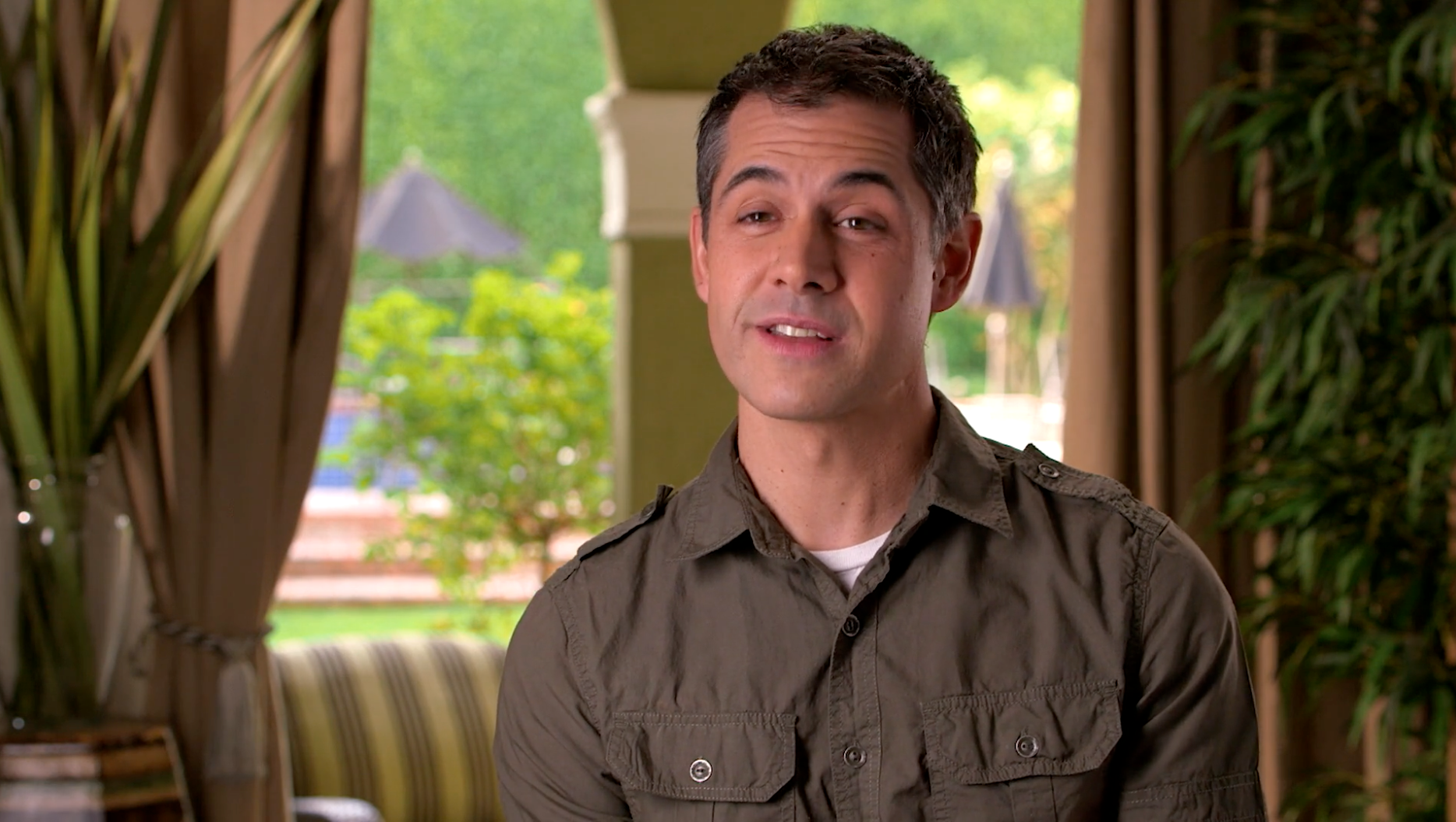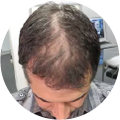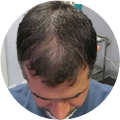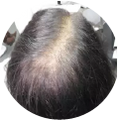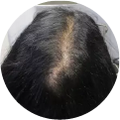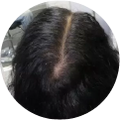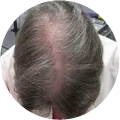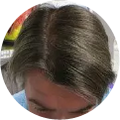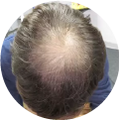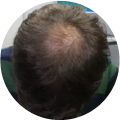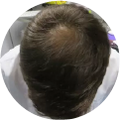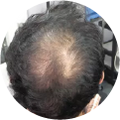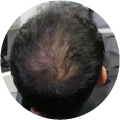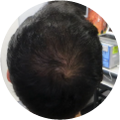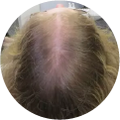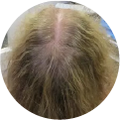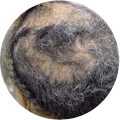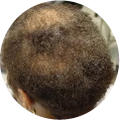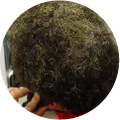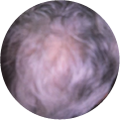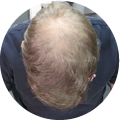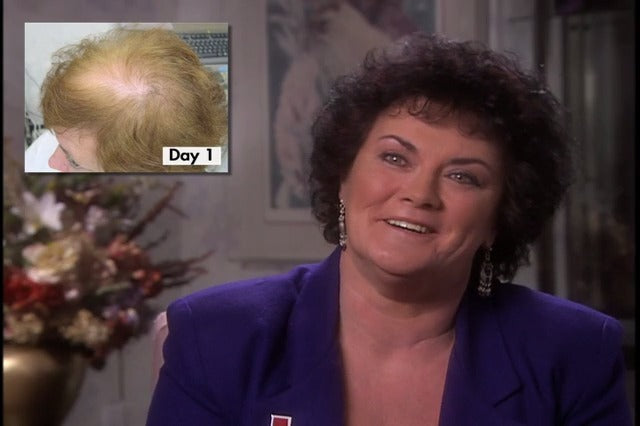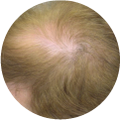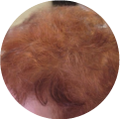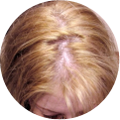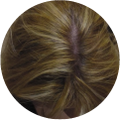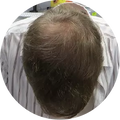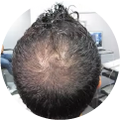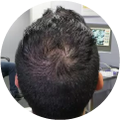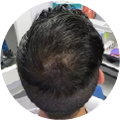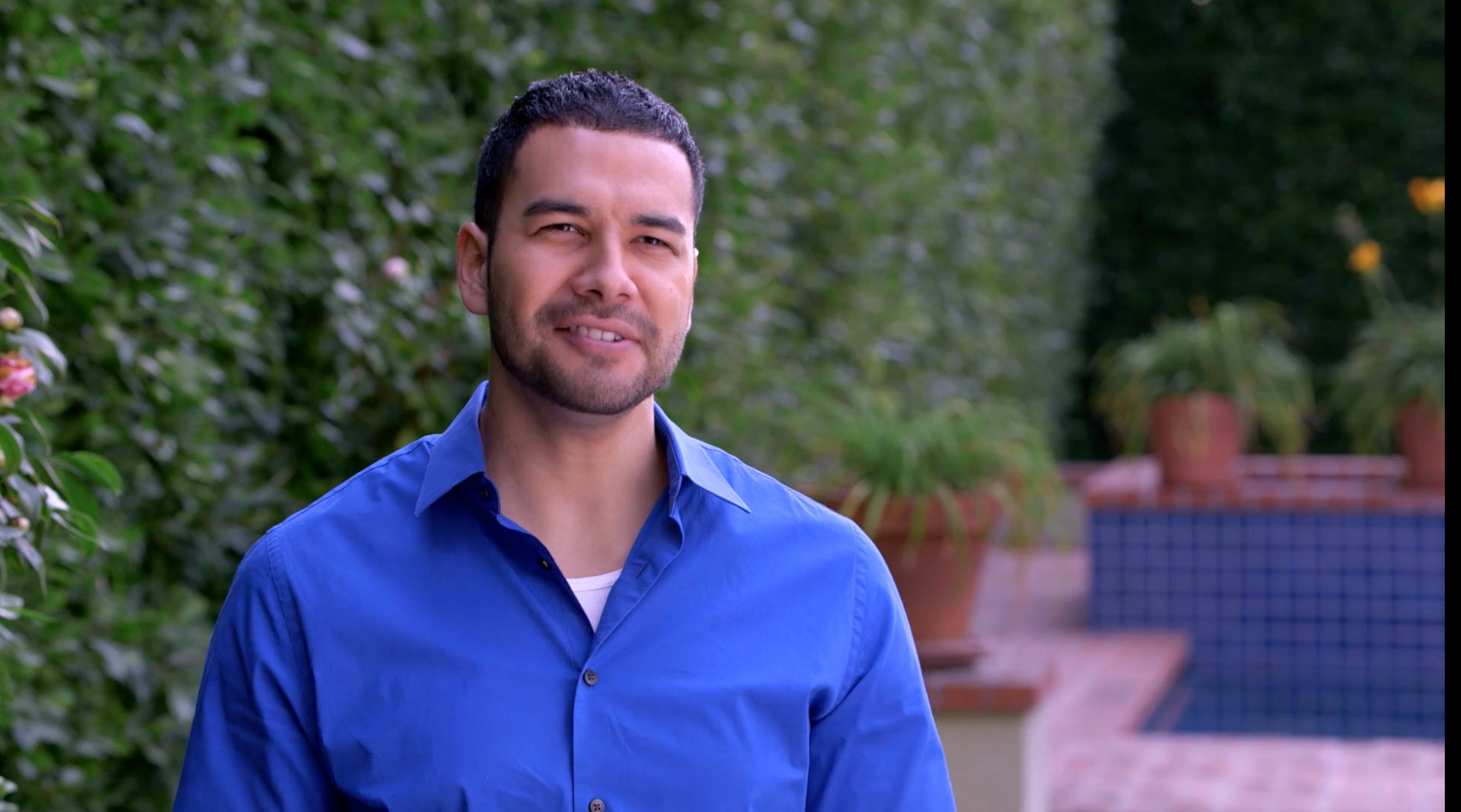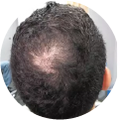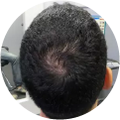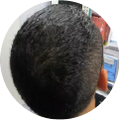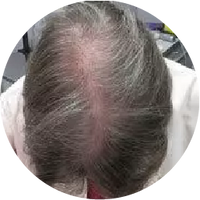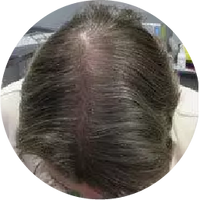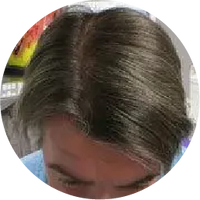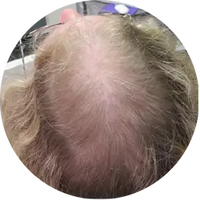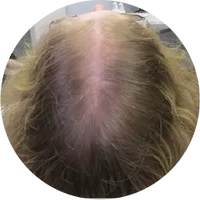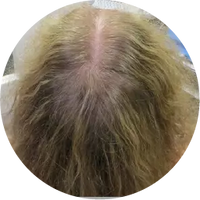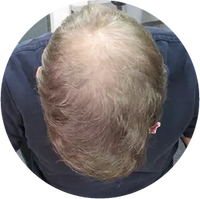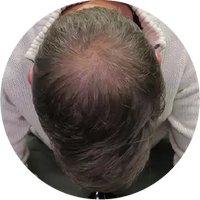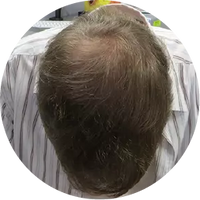
Anemia is a widely occurring condition that is most often caused by an iron deficiency. However, this is not the only cause of anemia. While most people know that anemia can cause fatigue, weakness, and lightheadedness, most people do not realize the significant impact anemia can have on hair growth. Anemia is one of the most common causes of hair loss in both men and women, but to understand its significance it is necessary to examine what anemia is, the different types of anemia, known causes for anemia, and how to counteract the effects of anemia to regrow hair.

What is Anemia?
Anemia occurs when blood does not contain a high enough concentration of red blood cells. The human body produces three distinct types of blood cells: white blood cells, red blood cells, and platelets. White blood cells primary task is to ward off infection. Platelets allow the blood to coagulate and clot, which prevents excessive blood loss from cuts, scrapes, and injuries. Red blood cells contain hemoglobin, which is an iron rich protein that tinges red blood cells with their hue. The hemoglobin in red blood cells allows red blood cells to transport oxygen from the lungs to all parts of the body and then to carry carbon dioxide from all parts of the body back into the lungs to be exhaled. Most blood cells, including red blood cells, are produced in bone marrow, which is found within the cavities of larger bones throughout the body. To produce red blood cells, and by extension the hemoglobin within them, the body must maintain sufficient levels of Iron, Vitamin B-12. Folate, and other various nutrients that should be ingested in a normal, healthy diet.
Symptoms of Anemia
The first step to ameliorating the effects of anemia is to identify the presence of this condition. Below are a few of the most common symptoms of anemia (symptoms may vary based on the cause of the anemia):
- Headaches
- Fatigue
- Weakness
- Chest pain
- Cold hands and feet
- Dizziness or lightheadedness
- Shortness of breath
- Pale of yellowish skin
- Irregular heartbeats
One important factor to keep in mind with anemia is that the symptoms can appear very subtle at first, but as the anemia worsens the symptoms will also increase in severity.
Causes of Anemia
There are several different causes of anemia, but the most common type of anemia is caused by iron deficiency. Iron deficiency anemia can cause hair loss, but is easily corrected with an iron supplement. Below are some of the most common causes of anemia:
- Iron Deficiency Anemia:Iron deficiency anemia is caused by a shortage of iron in the body. As mentioned above, bone marrow requires the presence of iron to produce the hemoglobin that is present in red blood cells. Without the presence of enough iron, the human body is incapable of producing enough hemoglobin for red blood cells. This can be very detrimental to overall health as well as to hair health. Iron deficiency anemia is sometimes caused by blood loss, such as from heavy menstrual bleeding. Many pregnant women also experience iron deficiency anemia. Anemia hair loss regrowth is most easily achieved for those suffering from iron deficiency anemia.
- Vitamin Deficiency Anemia:As mentioned previously, Iron is not the only necessary component utilized in the production of healthy red blood cells. The human body also requires Folate and Vitamin B-12 to maintain healthy red blood cell production. Most often vitamin deficiency anemia is caused by a diet that lacks these nutrients and is thereby not supplying the body with the levels it requires to continue producing red blood cells. In addition to diet deficiencies, there are some people whose bodies to not process Vitamin B-12, which can also lead to vitamin deficiency anemia. Vitamin deficiency anemia is also sometimes referred to as pernicious anemia.
- Sickle Cell Anemia:Sickle cell anemia is an inherited condition that is caused by a defective form of hemoglobin that forces red blood cells to assume an abnormal “sickle” shape that resembles a crescent. The body recognizes that these cells are abnormal, and because of their abnormality they do not possess the same lifecycle as a healthy red blood cell. These red blood cells possess an irregular lifecycle that pushes them to die prematurely, which leaves the body with a constant shortage of red blood cells.
- Aplastic Anemia:Aplastic anemia is a life-threatening, rare type of anemia that occurs when the body does not produce the correct amount of red blood cells necessary to keep the body functioning properly. Aplastic anemia is most often caused by autoimmune diseases, infections, certain medicines, and exposure to toxic chemicals.
- Hemolytic Anemias:Hemolytic anemias is not just a single type of anemia, but rather a group of anemias. Hemolytic anemias occur when red blood cells are destroyed at a faster rate than the bone marrow can replace them. Hemolytic anemia can be inherited or developed later in life, and is sometimes caused by certain blood diseases that increase red blood cell destruction.
- Bone Marrow Disease Anemias:There are several diseases, such as myelofibrosis and leukemia, which can result in anemia by affecting the blood production in bone marrow. The effects of these types of cancer, similar diseases, vary in severity based on each individual case, but can be life-threatening dependent upon the circumstances.
- Chronic Disease Anemias:There are many diseases, such as cancer, kidney disease, Crohn’s disease, HIV/AIDS, rheumatoid arthritis, and other various chronic inflammatory diseases, that are capable of interfering in the production of healthy red blood cells. This interference can vary in severity, but can produce a dangerous level of anemia.
Risk Factors for Developing Anemia
Each human being possesses their own unique composition of genetic and environmental factors that contribute to form their reactions to various forms of stimuli and external factors. When analyzing risk factors for developing anemia, there will be variances between each individual based on their unique genetic composition. Below are a handful of the most common risk factors for developing anemia:
- Pregnancy:Pregnant women are at risk to develop iron deficiency anemia or vitamin deficiency anemia, particularly if they are not taking a multivitamin that contains folic acid and iron.
- Family History:Some families possess genetic forms of anemia that can be inherited, such a sickle cell anemia. If there is a family history of inherited anemia, there is an increased risk that this condition will develop.
- Age:The risk for becoming anemic increases as human beings age, with people over the age of sixty-five being the most at-risk for developing anemia.
- Nutritionally Deficient Diet:As mentioned previously, the production of healthy red blood cells is reliant on the presence of sufficient amounts of Folate, Iron, and Vitamin B-12. When a diet is lacking in these elements, there is an increased risk of becoming anemic because of a nutritionally deficient diet that lacks nutrients essential to healthy red blood cell production.
- Menstruation:Menstruation is also a risk factor for becoming anemic due to the heavy blood loss that occurs, thereby leading to a loss of red blood cells. Once women go through menopause, this risk factor diminishes.
- Intestinal Disorders:There are several intestinal disorders that cause the body to be incapable of properly absorbing nutrients in the small intestine, which increases the risk of becoming anemic. Two of the most common intestinal disorders are Crohn’s disease and Celiac disease.
- Chronic Conditions:The presence of a chronic condition can also contribute to anemia by causing a shortage of red blood cells. Some of these chronic conditions are ulcers, which causes chronic blood loss that depletes the body’s iron levels, cancer, kidney failure, or another related chronic condition.
Supplements and Tips to Aid in the Regrowth Process
Iron deficiency hair loss regrowth can be a difficult idea to imagine amid excessive hair loss, as it sometimes feels like an irreversible travesty that will take a significant amount of time to fix. However, there are several supplements and strategies to implement to aid in iron deficiency hair regrowth. One of the simplest ways to combat iron deficiency anemia hair loss is to begin taking an over-the-counter iron supplement. It is important to keep in mind that the introduction of an iron supplement into a daily routine may cause constipation and gastrointestinal upset, so it is important to take precautions when beginning an iron supplement and to begin with a small dose. Hair regrowth after iron supplements occurs because the body’s natural balance is restored and healthy red blood cell production can commence once the body possesses the correct amount of iron required to product hemoglobin.
In addition to beginning an iron supplement, it is also beneficial to reassess the nutrients present in the food that you are consuming each day. A dietary overhaul is sometimes necessary for those that lack nutrient dense diets, particularly diets that provide sufficient levels of iron, folate, and Vitamin B-12. Because these three elements are integral in the production of healthy red blood cells and the hemoglobin they contain within them, they must be present in a healthy diet to combat iron deficiency and vitamin deficiency anemia and to promote anemia hair loss regrowth. Another important dietary factor to consider when attempting to regrow hair is that a diet that is rich in protein will positively impact the hair regrowth process. Hair is comprised of Keratin, which is one of the main building blocks of the hair shaft, and the presence of protein aids hair is growing, increases shine, elasticity, and volume, and promotes new hair follicle growth.
Another beneficial supplement to integrate when attempting to regrow hair from iron deficiency or vitamin deficiency anemia is Biotin. Biotin is a naturally occurring component in enzymes in the body that aids in the breakdown of carbohydrates, fats, and other substances. Biotin is also sometimes referred to as Vitamin B7, and it is water-soluble vitamin that is a component of the Vitamin B complex. Biotin is one of the most popular supplements utilized when attempting to naturally reverse hair loss, as it is has been known to significantly improve overall hair health. In addition to being beneficial to hair, Biotin is also known the improve nail and skin appearance and health. Biotin can be integrated in small doses into a diet by introducing Biotin dense foods. In addition to being capable of consumed, Biotin is most often taken in supplement form.
In addition to supplements, there are a few other effective strategies to help aid in the hair regrowth process. One of the most important factors in healthy hair growth is scalp health. Hair growth begins with fostering a healthy scalp. When cultivating a healthy scalp, it is important to target products that have beneficial ingredients, lack chemical additives, and are non-abrasive on the skin. Another strategy to help speed up the hair growth process is the limit the use of heated styling tools as much as possible. Utilizing heated styling tools on hair, particularly without the concurrent use of a heat protectant, can lead to breakage, frizz, and damaged locks. The final tip to follow to aid in the regrowth process is to brush hair each morning and each night before bed. Brushing the hair will help spread the naturally occurring oils on the scalp evenly throughout the hair, which helps the hair to maintain natural moisture. Brushing in the morning and at night also aids in increasing scalp circulation, which is beneficial in stimulating hair regrowth. These are just a few strategies and tips to aid in the regrowth process, but one of the most beneficial tactics to take when attempting to regrow hair from anemia is investing in a proven regimen shown to aid in hair regrowth.
How ScalpMed Can Help
ScalpMed utilizes a two-step process that halts and reverses hereditary hair loss and thinning, which is also referred to as male-pattern and female-pattern baldness. This uniquely developed two-step process is also capable of restoring hair lost due to non-hereditary factors. To speed up the hair regrowth process exponentially, invest in a proven method to stimulate hair regrowth. ScalpMed’s herbal hair supplement contains a unique blend of plant extracts and essential nutrients that help you grow thicker, healthier hair. Pair it with the topical solution or 2-step growth solution for optimal results!












